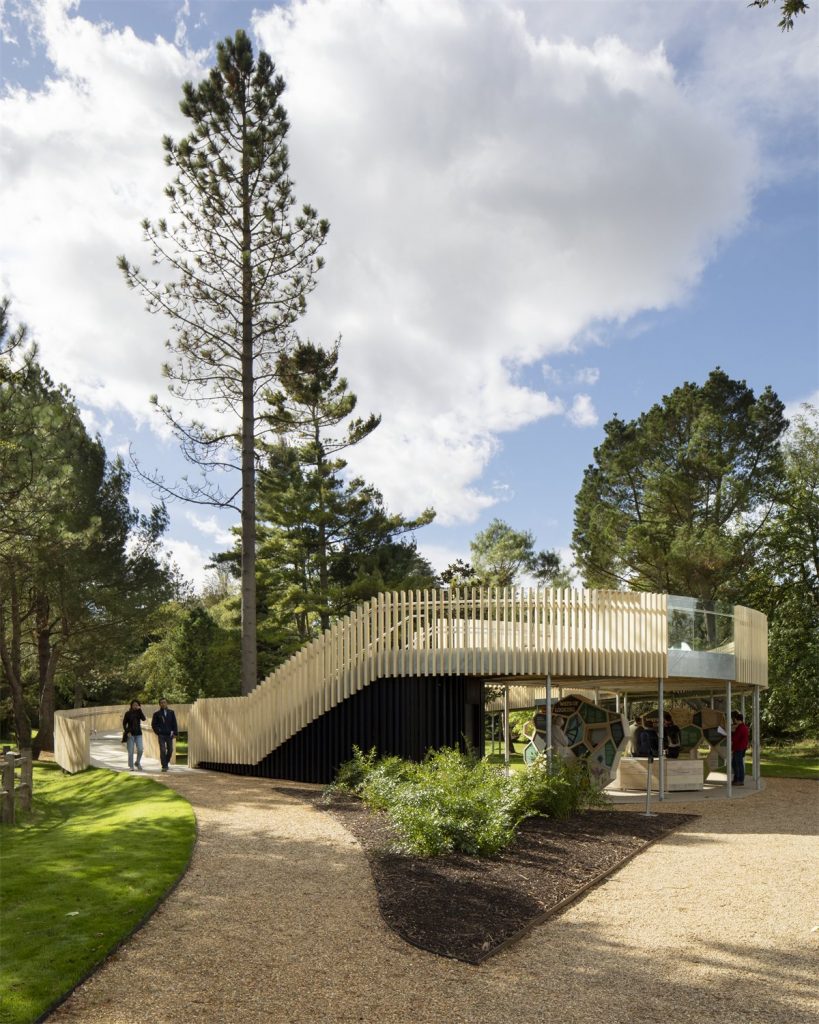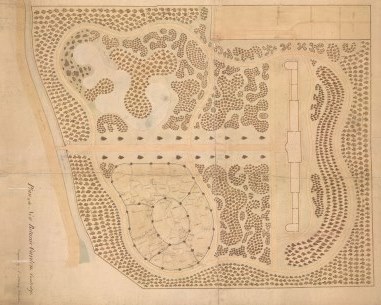Cory had been a life-long benefactor of the Garden (his donation built the beautiful Cory Lodge, pictured below, for the Director), and his legacy in 1934 unlocked the remaining 20 acres of land for development by the Garden.

This exciting task fell to Bob Younger, Superintendent of the Garden and his staff, under the direction of John Gilmour and began in 1951.
Although the western and eastern parts are stylistically linked through a consistantly Gardenesque style and the continuation of the sinuous perimeter path, they are very different in feel, character and curatorial content. This reflects how the primary foci of plant science studies had changed since the Garden’s foundation in the mid 19th century.
Whereas Murray’s 19th century plan for the layout of the Garden in the western 20 acres focussed on naming and organising of individual species into family groupings, the eastern part of the Garden developed from 1951 onwards is generally concerned with how plant communities develop.
Thus, the 20th century science of ecology permeates the philosophy of its plantings such as the Fen Display and the Limestone Mound in the British Wild Plants collections, and climate and sustainability issues dominate the thematic plantings of the Dry Garden.

The Sainsbury Laboratory
The Sainsbury Laboratory Cambridge University (SLCU) is a research institute funded by the Gatsby Foundation and hosted in the Botanic Garden. It was opened by Her Majesty the Queen on 27th April 2011 and houses over 120 scientists and support staff.
The aim of the Laboratory is to elucidate the regulatory systems underlying plant growth and development – essentially to understand how the diversity of plants grown in the Garden arose. Plants are the foundation for virtually every ecosystem and agricultural system on Earth. A fundamental understanding how plants grow and develop is therefore paramount for the long term security of a sustainable supply of food and other plant products, such as fuel, fibers and building materials.
At the heart of this world-class Laboratory is the University Herbarium. This is a collection of over one million pressed and dried plant specimens from all over the world, including those collected by Darwin on his Beagle voyage.
The Gilmour Suite, in a wing of the Sainsbury Laboratory, houses the Garden Cafe and terrace for Botanic Garden visitors.
The Rising Path
The most recent addition to the Garden is the Rising Path, built to create a fresh perspective on the Garden’s historic Systematic Beds.





